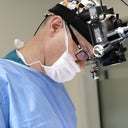Posted underEyelid Surgery q&a
Would I benefit from blepharoplasty on one eyelid to make it even to the other one? (Photo)
my left eyelid has always been droppy and ive never been able to makeup on that eye very well. my right eye is also hooded but it doesnt look saggy like the left eyelid
Answers (8)
From board-certified doctors and trusted medical professionals

Dr. Jason Emer, MD
Dermatologic Surgeon, Board Certified in Dermatology
Answer
Dr. Nick Koutroumanos, MBBS
Oculoplastic Surgeon, Specialist Registered in Ophthalmology
Answer
More Eyelid Surgery Questions
See all Eyelid Surgery Q&AWE SEND PRETTY
EMAILS
What’s trending? Who’s turning heads? Which TikTok myths need busting? We’ve got you. No fluff, no gatekeeping—just real talk. Get our free, unfiltered newsletter.



